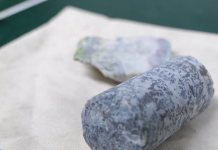LHASA: The preservation of intangible culture in the Tibet autonomous region has been contributing to the region’s rural revitalization, with artisans seeking a stable income by engaging in various craftsmanship workshops.
Cultural departments of the region have been steadily accelerating the work of establishing more workshops of intangible cultural heritage, providing more job opportunities for rural residents.
As of the end of 2022, the region had 151 workshops devoted to various forms of intangible cultural heritage in 49 counties, providing jobs for more than 6,000 rural residents and generating around 30,000 yuan ($4,300) of per capita annual income for these participants.
Paljor and Tsetan in Wangdan township of Shigatse have been operating a handicraft workshop for years, honing all aspects of carpet production, including spinning, weaving, cutting and coloring. By producing hand-made Tibetan carpets and rugs, they make a stable income while continuing their farming work.
Paljor and Tsetan receive orders from a company called Tibet Dropenling Culture Co, and their revenues have totaled more than 100,000 yuan each over the past three years.
“The only aspect that we need to guarantee is the quality. We do not need to worry about selling and marketing, and we can make money by working at our own doorstep,” they were quoted as saying by Economic Daily.
Tibet has a rich and colorful cultural heritage. At the end of 2022, the region had three items of intangible cultural heritage of humanity listed by UNESCO, 106 items listed at the national-level, 460 items listed at the regional level and more than 3,000 prefecture-county-level intangible cultural heritage listings.
–The Daily Mail-China Daily news exchange item





